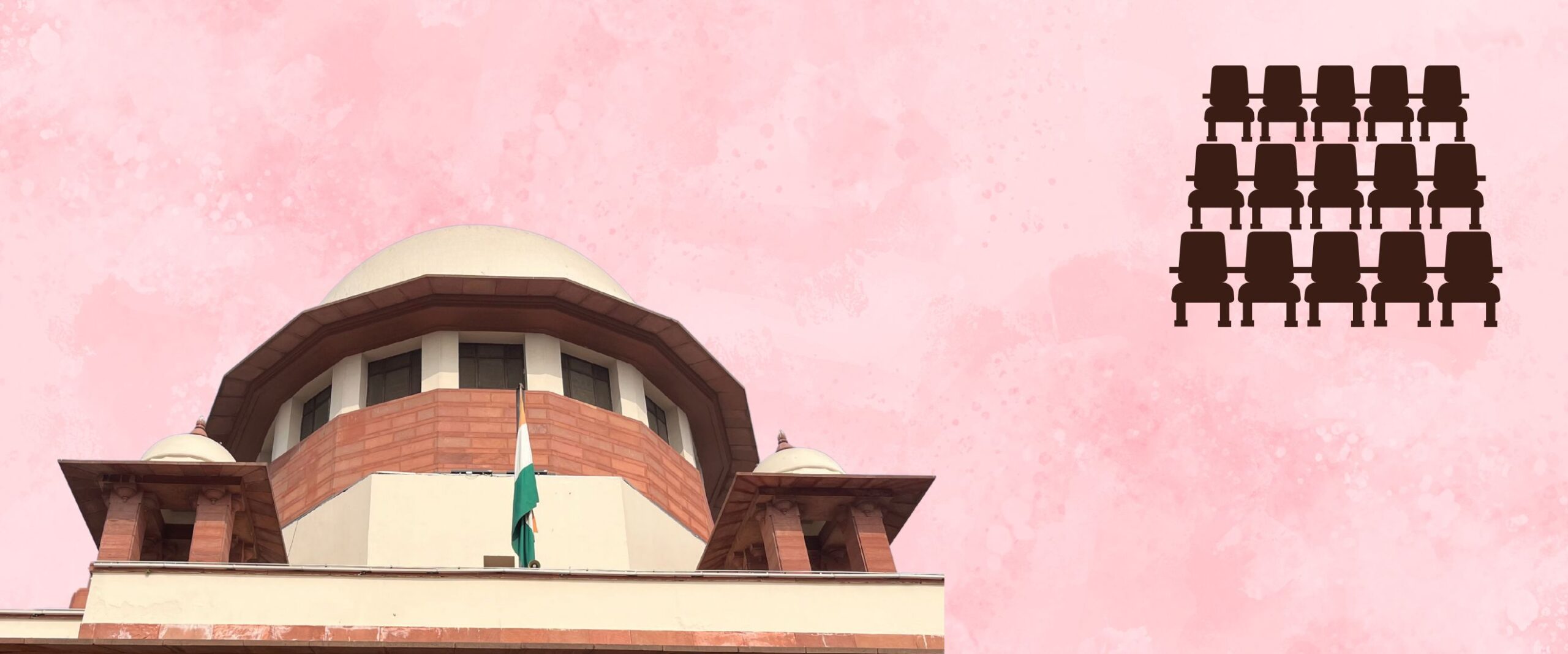Court Data
Six out of 25 High Courts are not represented at the Supreme Court | May 2025
The Collegium has made no recommendations from these High Courts since January 2018

On 30 May 2025, three new judges were sworn in to the Supreme Court of India. They were recommended by the Collegium, now led by Chief Justice B.R. Gavai, on 26 May. The resolution did not contain substantive information apart from the details of their Parent High Court.
Justice N.V. Anjaria, former Chief Justice of the Karnataka High Court, hails from the Gujarat High Court.
Justice Vijay Bishnoi, former Chief Justice of the Gauhati High Court, is from Rajasthan and Justice A.S. Chandurkar is from the Bombay High Court.
Regional representation on the bench is certainly given significant weightage by the Collegium as a factor for appointments. A recent document released by the Supreme Court detailing the process of appointing judges to the top court considers “fair representation” to all High Courts as a criterion. Past Collegiums have noted the parent High Court as a relevant factor for many appointments. It plays a role in the appointment of a future CJI too. For instance, the CJI Sanjiv Khanna-led Collegium had considered regional representation for the post of the Chief Justice when it recommended Justice Joymalya Bagchi earlier this year.
In this article, we will look at which High Courts are currently represented at the top court and which ones are not.
Figure 1 lists all the High Courts and the number of judges at the Supreme Court Bench from each.
Four High Courts are represented by three judges at the Supreme Court. These are the High Courts of Allahabad (Justices Vikram Nath, Pankaj Mithal and Manoj Misra), Bombay (Chief Justice B.R. Gavai, Justices P.B. Varale and A.S. Chandurkar), Gujarat (Justices B.M. Trivedi, J.B. Pardiwala and N.V. Anjaria) and Punjab & Haryana (Justices Surya Kant, Rajesh Bindal and A.G. Masih). They make up 12 judges (35 percent) in the top court.
Five High Courts are represented by two judges each: Calcutta (Justices Dipankar Datta and Joymalya Bagchi), Karnataka (Justice B.V. Nagarathna and Aravind Kumar), Madhya Pradesh (Justice J.K. Maheshwari and S.C. Sharma), Madras (Justices M.M. Sundresh and R. Mahadevan) and Rajasthan (Justices Sandeep Mehta and Vijay Bishnoi).
10 out of 25 high courts are represented by one judge. These are Andhra Pradesh (Justice S.V. Bhatti), Chhattisgarh (Justice P.K. Mishra), Delhi (Justice Manmohan), Gauhati (Justice Ujjal Bhuyan), Himachal Pradesh (Justice Sanjay Karol), Kerala (Justice K.V. Chandran), Manipur (Justice N.K. Singh), Patna (Justice Ahsanuddin Amanullah), Uttarakhand (Justice Sudhanshu Dhulia) and Telangana (Justice P.V. Sanjay Kumar).
Two judges were directly elevated from the Bar—Justices P.S. Narasimha and K.V. Viswanathan.
No representation from six High Courts
There is no absolute rule that prescribes a specific number of judges from each high court. For instance, in our article on regional representation in June 2023, there were four judges from the Delhi High Court. This has now been reduced to one—Justice Manmohan.
Currently, six out of 25 High Courts have seen no representation on the Bench. These are the High Courts of Jharkhand, Meghalaya, Orissa, Sikkim, Tripura and Jammu & Kashmir and Ladakh. There has been no recommendation from these High Courts since 2018.
The Supreme Court’s document on the process of appointing judges pushed for “fair representation”, but is silent on how regional representation is computed.
Notably, the three new appointments point towards a regional inclination, although the resolution never expressly states it. The appointment of Justice Chandrukar from Bombay appears to factor in Justice A.S. Oka’s retirement from the Bench earlier this month. Similarly, the appointment of Justice Anjaria likely prepares for the vacancy arising out of Justice Trivedi’s retirement on 9 June 2025.
With the new appointments, the strength of the Supreme Court is at 34 judges, i.e. its full capacity. With three more retirements this year, it remains to be seen how the Collegium will approach “fair representation” from the six unrepresented High Courts.